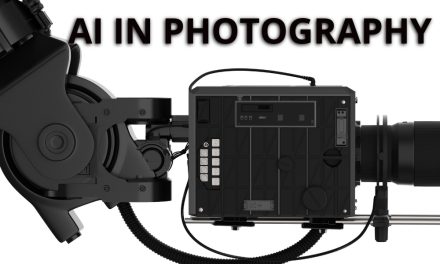3D Printing for Beginners: Identifying Your Ideal Customer
The world of 3D printing can be both exciting and daunting for beginners. With so many options and possibilities, it can be challenging to know where to start. As a beginner, one of the essential steps to take is to identify your ideal customer. Understanding who you’re creating for will help you tailor your 3D printing projects to meet their needs and preferences. Are you targeting hobbyists, artists, or entrepreneurs? Each of these groups has different requirements, and identifying your ideal customer will help you create a product that resonates with them. In this article, we’ll explore the importance of identifying your ideal customer as a beginner in 3D printing and offer tips on how to do so effectively. Whether you’re just starting or looking to take your 3D printing skills to the next level, this guide will help you create projects that meet your target audience’s needs and exceed their expectations.
Understanding 3D Printing
3D printing is a process of creating a physical object from a digital model. The process involves slicing the model into layers and then printing each layer one at a time until the object is complete. 3D printers use various materials, including plastic, metal, and even food, to create objects.
3D printing has revolutionized many industries, including manufacturing, medicine, and architecture. It has made it easier and more affordable for businesses and individuals to create prototypes, customize products, and even produce replacement parts.
Importance of Identifying Your Ideal Customer
Identifying your ideal customer is one of the essential steps to take as a beginner in 3D printing. It helps you understand who you’re creating for and what their needs and preferences are. By knowing your ideal customer, you can tailor your 3D printing projects to meet their requirements, making your products more appealing and valuable to them.
Not knowing your ideal customer can result in creating products that are not relevant or useful to anyone. It can also lead to wasted time, money, and resources. By identifying your ideal customer, you can avoid these pitfalls and create projects that resonate with your target audience.
Identifying Your Target Market
To identify your ideal customer, you first need to identify your target market. Your target market is the group of people who are most likely to buy your products or services. They share common characteristics, such as age, gender, income level, interests, and values.
To identify your target market, you can start by asking yourself the following questions:
– Who do I want to sell my 3D printing products or services to?
– What are their demographics, such as age, gender, income level, and education level?
– What are their psychographics, such as interests, values, and lifestyle?
– What problems or needs do they have that my 3D printing products or services can solve?
Once you have answered these questions, you can use the information to create customer personas.
Conducting Market Research
Market research is an essential step in identifying your ideal customer. It involves gathering information about your target market, such as their demographics, psychographics, behavior, and needs. There are several ways to conduct market research, including surveys, focus groups, and online research.
Surveys are a great way to gather information about your target market. You can create a survey using online tools such as SurveyMonkey or Google Forms and send it to your target audience via email or social media. In your survey, you can ask questions such as:
– What are your 3D printing needs and preferences?
– What problems do you encounter when using 3D printing?
– What features do you look for in a 3D printing product or service?
Focus groups are another way to gather information about your target market. Focus groups involve bringing together a group of people who represent your target audience and asking them questions about your products or services. You can conduct focus groups in person or online using tools such as Zoom, google meet or Skype.
Online research involves gathering information about your target market from online sources such as social media, forums, and blogs. You can search for keywords related to your products or services and read what people are saying about them. You can also use online tools such as Google Trends to see what topics related to 3D printing are trending.
Creating Customer Personas
Customer personas are fictional characters that represent your ideal customers. They are created based on the information you have gathered from your market research. Customer personas help you understand your target audience better and tailor your 3D printing projects to meet their needs and preferences.
To create customer personas, you can start by giving them a name, age, and other demographic information. You can also include their interests, values, and lifestyle. You can then use the information to create a story about your customer persona, including their goals, challenges, and how your 3D printing products or services can help them.
Factors to Consider in Identifying Your Ideal Customer
When identifying your ideal customer, there are several factors to consider, including:
– Demographics: Age, gender, income level, education level, and occupation.
– Psychographics: Interests, values, lifestyle, and personality.
– Behavior: How your target audience behaves, such as their buying habits and online behavior.
– Needs: The problems or needs your target audience has that your 3D printing products or services can solve.
By considering these factors, you can create customer personas that are realistic and useful in guiding your 3D printing projects.
Examples of Ideal Customer for 3D Printing Business
The ideal customer for a 3D printing business can vary depending on the products or services offered. Here are some examples of ideal customers for different types of 3D printing businesses:
– Hobbyists: People who enjoy 3D printing as a hobby and are looking for affordable and easy-to-use 3D printers.
– Artists: People who use 3D printing to create art and are looking for high-quality and versatile 3D printers.
– Entrepreneurs: People who use 3D printing to create prototypes or customized products and are looking for reliable and efficient 3D printers.
Tailoring Your Marketing Strategy to Your Ideal Customer
Once you have identified your ideal customer, you can tailor your marketing strategy to meet their needs and preferences. This includes creating marketing messages that resonate with your target audience, choosing the right marketing channels, and creating content that is relevant and valuable to them.
For example, if your ideal customer is a hobbyist, you can create marketing messages that emphasize the affordability and ease of use of your 3D printers. You can also use social media platforms such as Facebook and Instagram to reach hobbyists who are interested in 3D printing. You can create content such as tutorials and how-to guides that are useful and engaging to hobbyists.
Tips for Reaching Your Ideal Customer
Here are some tips for reaching your ideal customer:
– Use social media platforms such as Facebook, Instagram, and LinkedIn to reach your target audience.
– Offer free resources such as tutorials and how-to guides to engage your target audience.
– Attend trade shows and events where your target audience is likely to be present.
– Collaborate with influencers who have a following in your target audience.
Conclusion
Identifying your ideal customer is an essential step in 3D printing, whether you’re a beginner or an experienced user. It helps you create projects that meet your target audience’s needs and preferences, making your products more valuable and appealing to them. By conducting market research, creating customer personas, and tailoring your marketing strategy, you can reach your ideal customer and create successful 3D printing projects.










